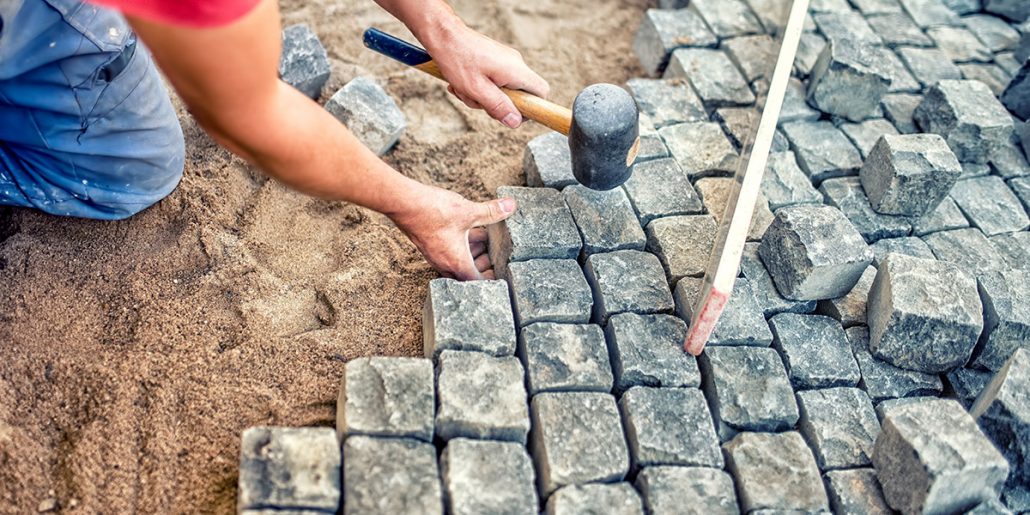Opening the Secrets of Lasting Masonry Building And Construction Practices for Eco-Friendly Buildings
In the realm of modern building, the search of lasting methods has become paramount. Among the myriad approaches to eco-friendly structure, lasting masonry building stands apart as a reliable and durable technique that holds a wide range of untapped capacity. From the choice of products to cutting-edge building strategies, the tricks to attaining sustainability within stonework building and construction are complex and intriguing. By exploring the advantages, products, methods, and future fads of lasting masonry, a much deeper understanding of how these practices can shape the future of eco-friendly structures arises.
Advantages of Sustainable Masonry Building
Welcoming sustainable stonework building and construction methods not only decreases ecological influence yet also offers long-term financial advantages to building contractors and areas. By using materials like recycled blocks, blocks, and stones, builders can significantly reduce the carbon footprint of their projects while promoting resource effectiveness. In addition, sustainable stonework construction methods, such as proper insulation and thermal mass residential properties, can enhance energy efficiency within buildings, leading to minimized functional prices gradually.
Furthermore, the toughness and resilience of masonry frameworks add to long-lasting economic advantages. Buildings constructed using lasting stonework techniques frequently call for less maintenance and fixing, translating to set you back financial savings for building contractors and residential property proprietors. The longevity of stonework materials additionally guarantees that frameworks stay stable and secure, minimizing the demand for regular renovations or substitutes.
Eco-Friendly Masonry Products
Using green stonework products is a pivotal step in the direction of boosting the sustainability of construction practices and minimizing environmental effect while taking full advantage of lasting financial benefits. Sustainable stonework materials are sourced, created, and utilized in a way that reduces total ecological influence. Sustainable concrete blocks include recycled aggregates and might feature improved insulation properties, adding to power performance in structures.
Additionally, natural materials like adobe, rammed earth, and straw bales offer superb thermal mass homes, decreasing the demand for heating and cooling down power. These products are often locally available, advertising regional economic situations and decreasing transportation-related carbon discharges. By picking environment-friendly masonry products, building projects can substantially minimize their environmental footprint and add to the creation of much healthier, more sustainable constructed settings.
Energy-Efficient Masonry Techniques
Energy performance plays a vital duty in improving the sustainability of masonry building and construction techniques. One key energy-efficient stonework strategy is the use of thermal mass, which includes integrating dense materials like concrete or brick right into the structure's framework to take in and store warmth.

Innovations in Lasting Masonry
Current innovations in sustainable masonry techniques have actually brought around ingenious strategies that are improving the building market. One such development is the growth of self-healing concrete, which uses germs installed within the concrete to heal fractures autonomously. This breakthrough not just decreases upkeep prices yet also enhances the resilience of masonry structures, adding to their sustainability.
One more noteworthy visit site advancement is using recycled aggregates in stonework building - masonry contractor. By incorporating materials such as crushed ceramic waste or recycled glass right into concrete blends, building contractors can minimize the environmental impact of building and construction tasks while maintaining architectural stability. This technique not only draws away waste from landfills however also conserves natural resources, making it a vital improvement in sustainable stonework building and construction
Moreover, the integration of digital layout devices, such as Structure Information Modeling (BIM), is revolutionizing the way stonework structures are planned and constructed. BIM allows for more exact calculations, lowered product waste, and boosted power efficiency, inevitably causing more sustainable building methods. These technologies jointly represent an encouraging future for lasting masonry construction in the era of eco-friendly buildings.
Future Trends in Masonry Sustainability
With the innovative strides made in sustainable stonework methods, the future trends in masonry sustainability are positioned to more reinvent the building industry. Among the essential patterns forming the future of stonework sustainability is the enhanced assimilation of modern technology. Developments such as Building Details Modeling (BIM) and digital fact simulations are being used to optimize masonry construction processes, causing lowered product waste and enhanced energy efficiency in buildings.
In addition, the advancement of novel lasting products is readied to play a considerable function in improving the eco-friendliness of masonry construction. masonry contractor. Advancements like self-healing concrete, recycled accumulations, and bio-based binders are getting traction for their capacity to reduce ecological effect while maintaining structural stability

Final Thought
In verdict, lasting stonework construction techniques use many benefits for eco-friendly buildings. masonry contractor. Innovations in sustainable stonework are continuously being created to better improve the ecological performance of structures.